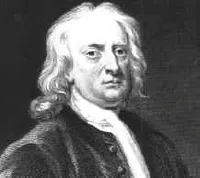
eBook - ePub
Undergraduate Convexity
From Fourier and Motzkin to Kuhn and Tucker
Niels Lauritzen
This is a test
Compartir libro
- 300 páginas
- English
- ePUB (apto para móviles)
- Disponible en iOS y Android
eBook - ePub
Undergraduate Convexity
From Fourier and Motzkin to Kuhn and Tucker
Niels Lauritzen
Detalles del libro
Vista previa del libro
Índice
Citas
Información del libro
Based on undergraduate teaching to students in computer science, economics and mathematics at Aarhus University, this is an elementary introduction to convex sets and convex functions with emphasis on concrete computations and examples.
Starting from linear inequalities and Fourier–Motzkin elimination, the theory is developed by introducing polyhedra, the double description method and the simplex algorithm, closed convex subsets, convex functions of one and several variables ending with a chapter on convex optimization with the Karush–Kuhn–Tucker conditions, duality and an interior point algorithm.
Contents:
- Fourier–Motzkin Elimination
- Affine Subspaces
- Convex Subsets
- Polyhedra
- Computations with Polyhedra
- Closed Convex Subsets and Separating Hyperplanes
- Convex Functions
- Differentiable Functions of Several Variables
- Convex Functions of Several Variables
- Convex Optimization
- Appendices:
- Analysis
- Linear (In)dependence and the Rank of a Matrix
Readership: Undergraduates focusing on convexity and optimization.
Preguntas frecuentes
¿Cómo cancelo mi suscripción?
¿Cómo descargo los libros?
Por el momento, todos nuestros libros ePub adaptables a dispositivos móviles se pueden descargar a través de la aplicación. La mayor parte de nuestros PDF también se puede descargar y ya estamos trabajando para que el resto también sea descargable. Obtén más información aquí.
¿En qué se diferencian los planes de precios?
Ambos planes te permiten acceder por completo a la biblioteca y a todas las funciones de Perlego. Las únicas diferencias son el precio y el período de suscripción: con el plan anual ahorrarás en torno a un 30 % en comparación con 12 meses de un plan mensual.
¿Qué es Perlego?
Somos un servicio de suscripción de libros de texto en línea que te permite acceder a toda una biblioteca en línea por menos de lo que cuesta un libro al mes. Con más de un millón de libros sobre más de 1000 categorías, ¡tenemos todo lo que necesitas! Obtén más información aquí.
¿Perlego ofrece la función de texto a voz?
Busca el símbolo de lectura en voz alta en tu próximo libro para ver si puedes escucharlo. La herramienta de lectura en voz alta lee el texto en voz alta por ti, resaltando el texto a medida que se lee. Puedes pausarla, acelerarla y ralentizarla. Obtén más información aquí.
¿Es Undergraduate Convexity un PDF/ePUB en línea?
Sí, puedes acceder a Undergraduate Convexity de Niels Lauritzen en formato PDF o ePUB, así como a otros libros populares de Mathematics y Applied Mathematics. Tenemos más de un millón de libros disponibles en nuestro catálogo para que explores.
Información
Categoría
MathematicsCategoría
Applied MathematicsChapter 1
Fourier-Motzkin elimination
You probably agree that it is easy to solve the equation

This is an example of a linear equation in one variable having the unique solution x = 2. Perhaps you will be surprised to learn, that there is essentially no difference between solving a simple equation like (1.1) and the more complicated system

of linear equations in x, y and z. Using the first equation 2x + y + z = 7 we solve for x and get

This may be substituted into the remaining two equations in (1.2) and we get the simpler system

of linear equations in y and z. Again using the first equation in this system we get

ending up with the simple equation 8z = 24. This is an equation of the type in (1.1) giving z = 3. Now z = 3 gives y = 2 using (1.4). Finally y = 2 and z = 3 gives x = 1 using (1.3).

Figure 1.1: Isaac Newton (1642–1727). English mathematician.
Solving a seemingly complicated system of linear equations like (1.2) is really no more difficult than solving the simple equation (1.1). One of the world's greatest scientists, Isaac Newton, found it worthwhile to record this method in 1720 with the words
And you are to know, that by each Æquation one unknown Quantity may be taken away, and consequently, when there are as many Æquations and unknown Quantities, all at length may be reduc'd into one, in which there shall be only one Quantity unknown.

Figure 1.2: Carl Friedrich Gauss (1777–1855). German mathematician.
During the computation of the orbit of the asteroid Pallas around 1810, Gauss encountered the need for solving linear equations related to his famous least squares method. If you spend a little time deciphering the Latin in Gauss's original writings (see Figure 1.3), you will see how elimination appears naturally towards the end of the page. In spite of Newton's explicit ...